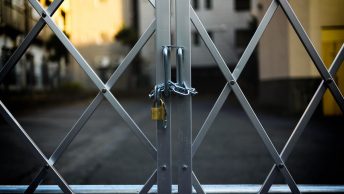Here’s an interesting conundrum: I’m sitting in my home office here in Salem and there are news helicopters circling overhead. Something must be going on, but a quick scan through the local TV stations and the local newspaper web sites reveals no breaking news and no indication of anything going on. Guess I have to wait until the evening news.
It’s an interesting symptom of the “instant news” world we live in that I expect the news to be reported instantly, either via the broadcast media or online. I wonder if that’s a good thing or a bad thing.







I live close to where those cars were hit by a train on the night before Thanksgiving last year. We could see lots of helicopters just sitting in the sky, but we didn’t actually know what had actually happened until the video started showing up on the news.
I once read in a book about an old monk on Mt. Athos—the Orthodox monastic republic in Greece—that he was asked about how much he knew about world affairs. His answer was “Enough.” According to him, if the news was really important he would hear of it from pilgrims, sometimes decades after the event and only those things that were really important made it to his hermitage. (He heard details about WWII sometime in the 1960’s and was none the worse for the delay.)
So though I am a current events junkie, I enjoy going to a hermit oriented Maronite monastery for my annual retreat required of all deacons. And when I read the news a week later, I realize I’ve missed nothing of importance 99% of the time.
In my experience in the TV biz, there is no reliable correlation between the presence of station choppers and developments of real moment, let alone urgency. On slow news days, such as the holiday season, news assignment desks, particularly at stations with more than one helicopter, such as Channel 7, dispatch their birds with a wanton desperation in search of anything that smells like it could be turned into a “story,” based on chatter picked up on a police scanner for instance. It’s often much ado about nothing, but the stations go on these wild goose chases because aerial shots have dramatic impact visually, implying that the station is literally on top of developments, and make great teasers to lead news broadcasts that otherwise would be quite limp.
The irony here is that “real news,” if there is actually anything happening that would qualify, won’t, with the exception of things like fires, explosions, traffic tie-ups created by accidents, be uncovered until a reporter on the ground can actually get to the scene.
Call me a middle-aged fogey, but the proliferation of news choppers has, in my view, created the journalistic equivalent of grade inflation in higher education. You can see the phenomenon at its worst in markets like LA where the local news block goes on for hours every day and gets filled with chopper shots of cats being rescued from trees.
In my work in university public relations, I was once at the spearhead of a national news story. A Blue Angel (I think; I always confuse them and the Thunderbirds) crashed—with a civilian passenger in the plane—just outside our town. Since our university had the only professional camera crew & equipment in the city, NBC called us right after the crash to see if we could send out a camera crew. I was the one who received the phone call, which was kind of thrilling from a journalistic standpoint.
Since we were PR, we referred the situaion to the Comm Arts department, who sent out some undergraduates to do the camera work. I, of course, called my parents, who kept an eye on CNN all day, but the footage didnt’ come on TV till dinner time.